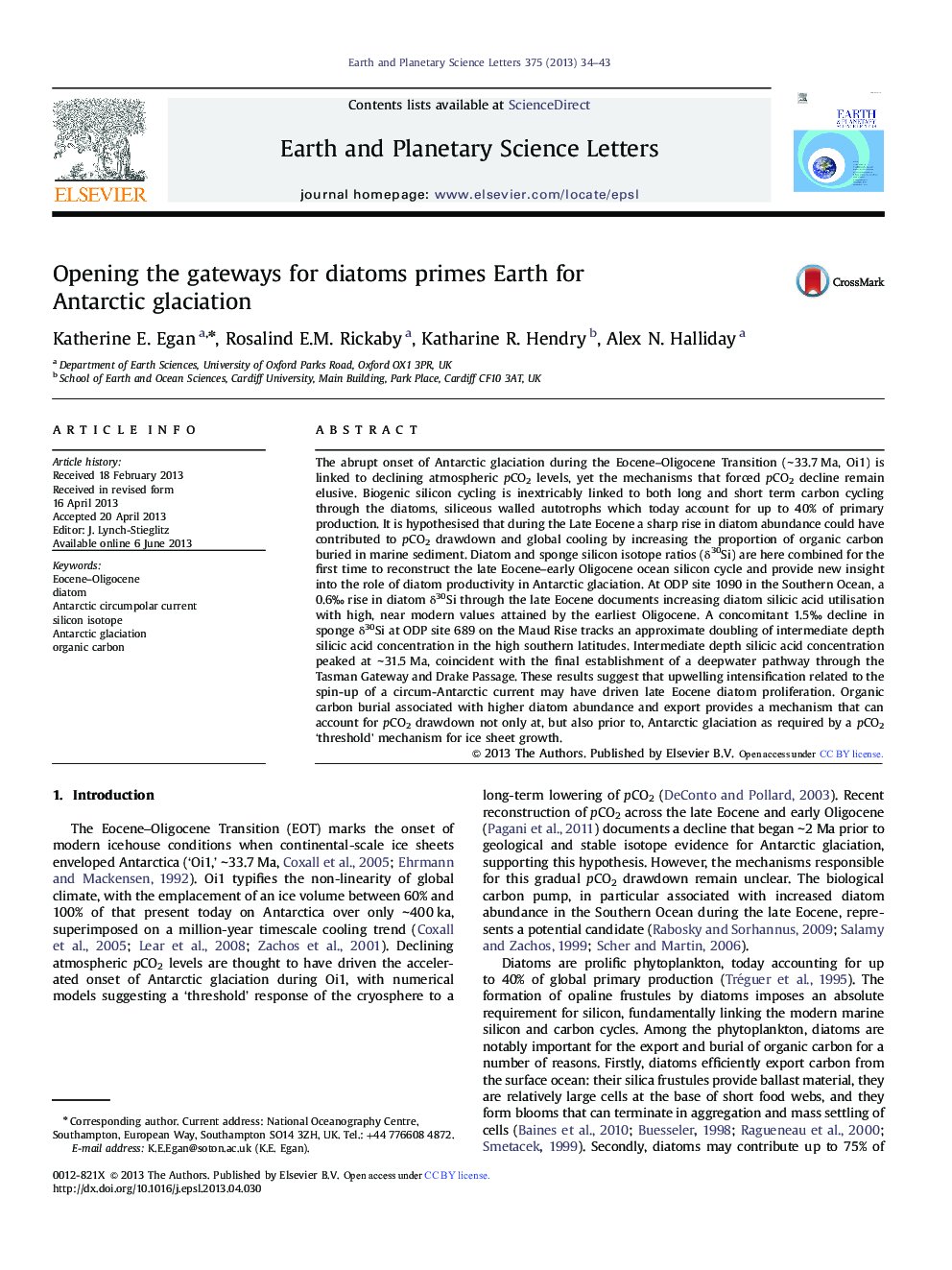| کد مقاله | کد نشریه | سال انتشار | مقاله انگلیسی | نسخه تمام متن |
|---|---|---|---|---|
| 6430183 | 1634780 | 2013 | 10 صفحه PDF | دانلود رایگان |
- Diatom and sponge δ30Si used to reconstruct the Eocene-Oligocene silicon cycle.
- 0.6Ⱐlate Eocene rise in diatom δ30Si (increasing silicic acid utilisation).
- 1.5Ⱐlate Eocene/early Oligocene sponge δ30Si fall (increasing silicic acid concentration).
- Upwelling related to proto-ACC facilitated late Eocene diatom proliferation.
- Diatom driven carbon burial contributed to pCO2 decline before Antarctic glaciation.
The abrupt onset of Antarctic glaciation during the Eocene-Oligocene Transition (â¼33.7 Ma, Oi1) is linked to declining atmospheric pCO2 levels, yet the mechanisms that forced pCO2 decline remain elusive. Biogenic silicon cycling is inextricably linked to both long and short term carbon cycling through the diatoms, siliceous walled autotrophs which today account for up to 40% of primary production. It is hypothesised that during the Late Eocene a sharp rise in diatom abundance could have contributed to pCO2 drawdown and global cooling by increasing the proportion of organic carbon buried in marine sediment. Diatom and sponge silicon isotope ratios (δ30Si) are here combined for the first time to reconstruct the late Eocene-early Oligocene ocean silicon cycle and provide new insight into the role of diatom productivity in Antarctic glaciation. At ODP site 1090 in the Southern Ocean, a 0.6â° rise in diatom δ30Si through the late Eocene documents increasing diatom silicic acid utilisation with high, near modern values attained by the earliest Oligocene. A concomitant 1.5â° decline in sponge δ30Si at ODP site 689 on the Maud Rise tracks an approximate doubling of intermediate depth silicic acid concentration in the high southern latitudes. Intermediate depth silicic acid concentration peaked at â¼31.5 Ma, coincident with the final establishment of a deepwater pathway through the Tasman Gateway and Drake Passage. These results suggest that upwelling intensification related to the spin-up of a circum-Antarctic current may have driven late Eocene diatom proliferation. Organic carbon burial associated with higher diatom abundance and export provides a mechanism that can account for pCO2 drawdown not only at, but also prior to, Antarctic glaciation as required by a pCO2 'threshold' mechanism for ice sheet growth.
Graphical Abstract250
Journal: Earth and Planetary Science Letters - Volume 375, 1 August 2013, Pages 34-43
